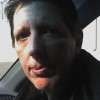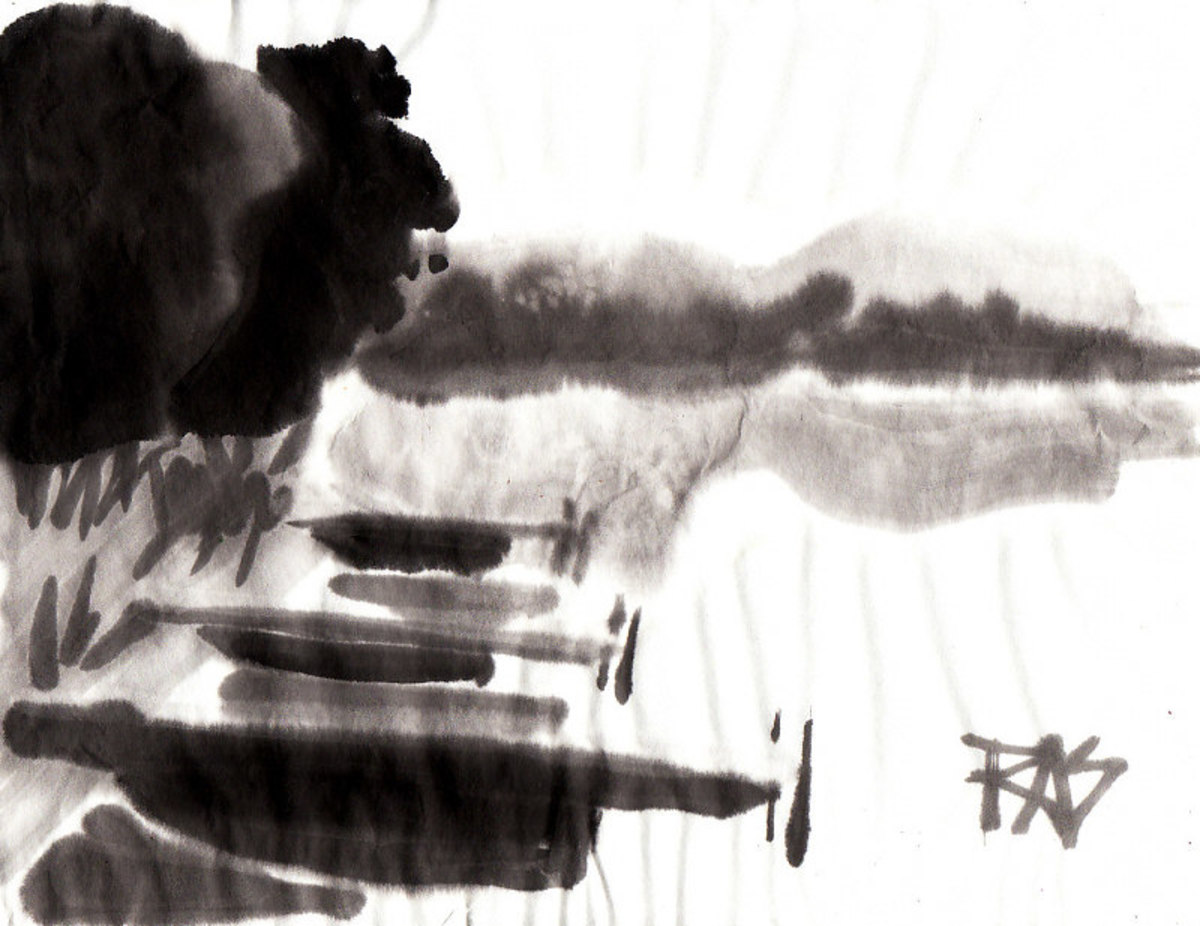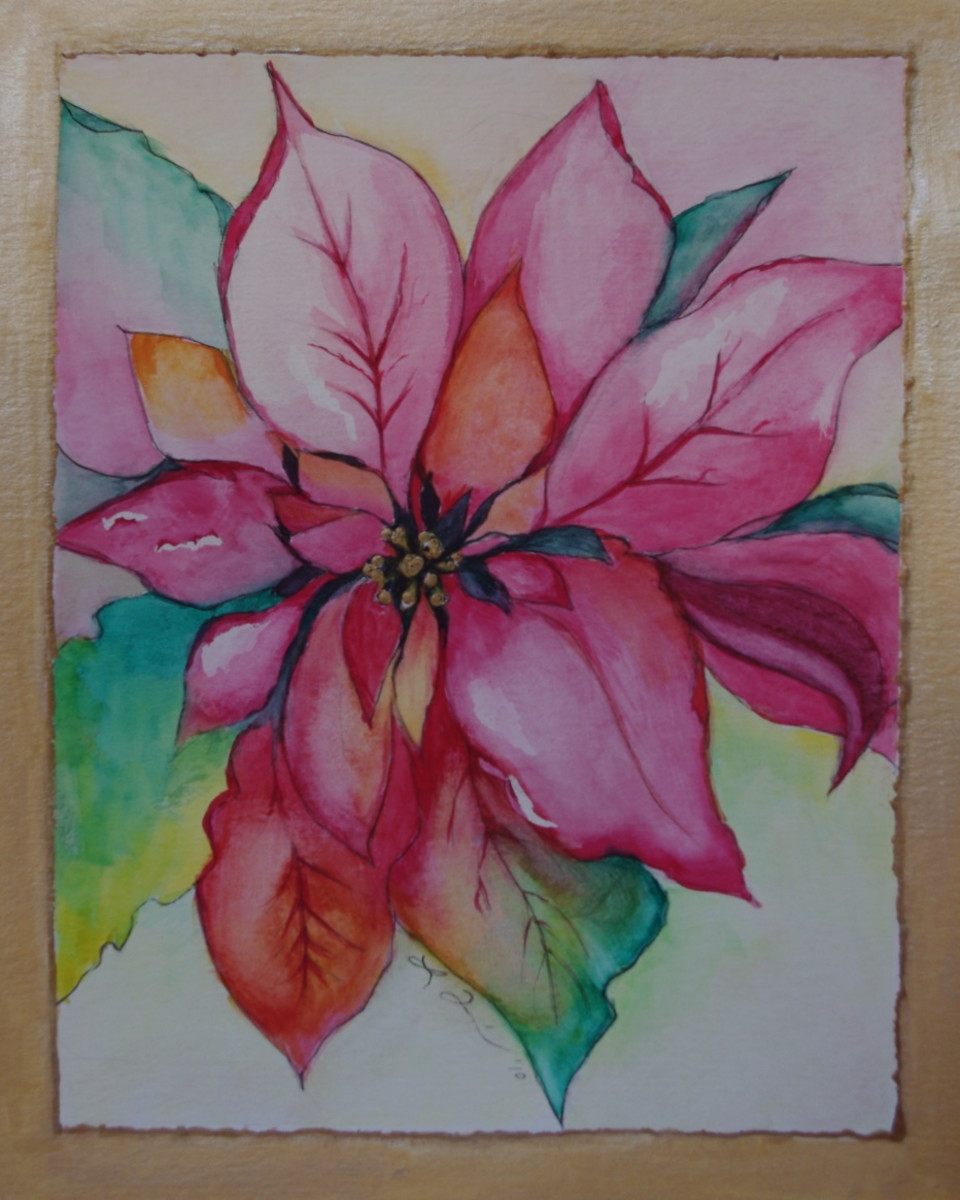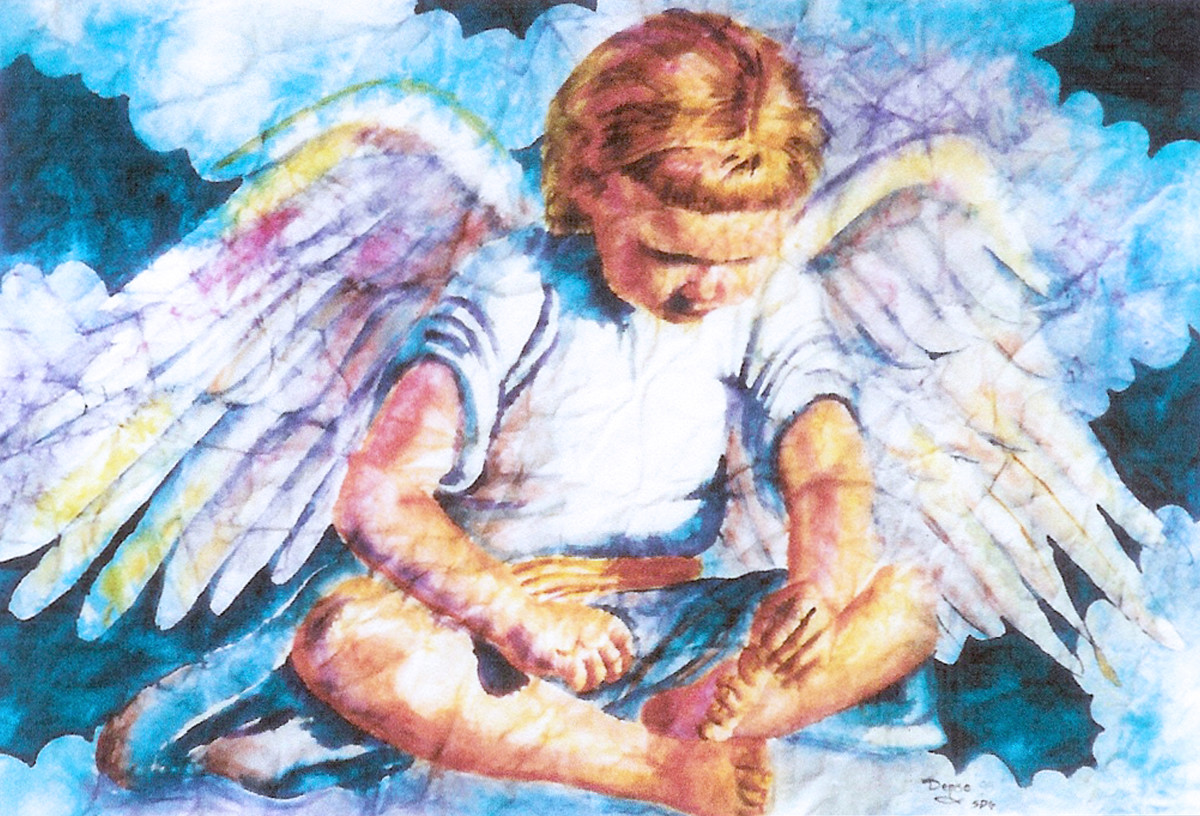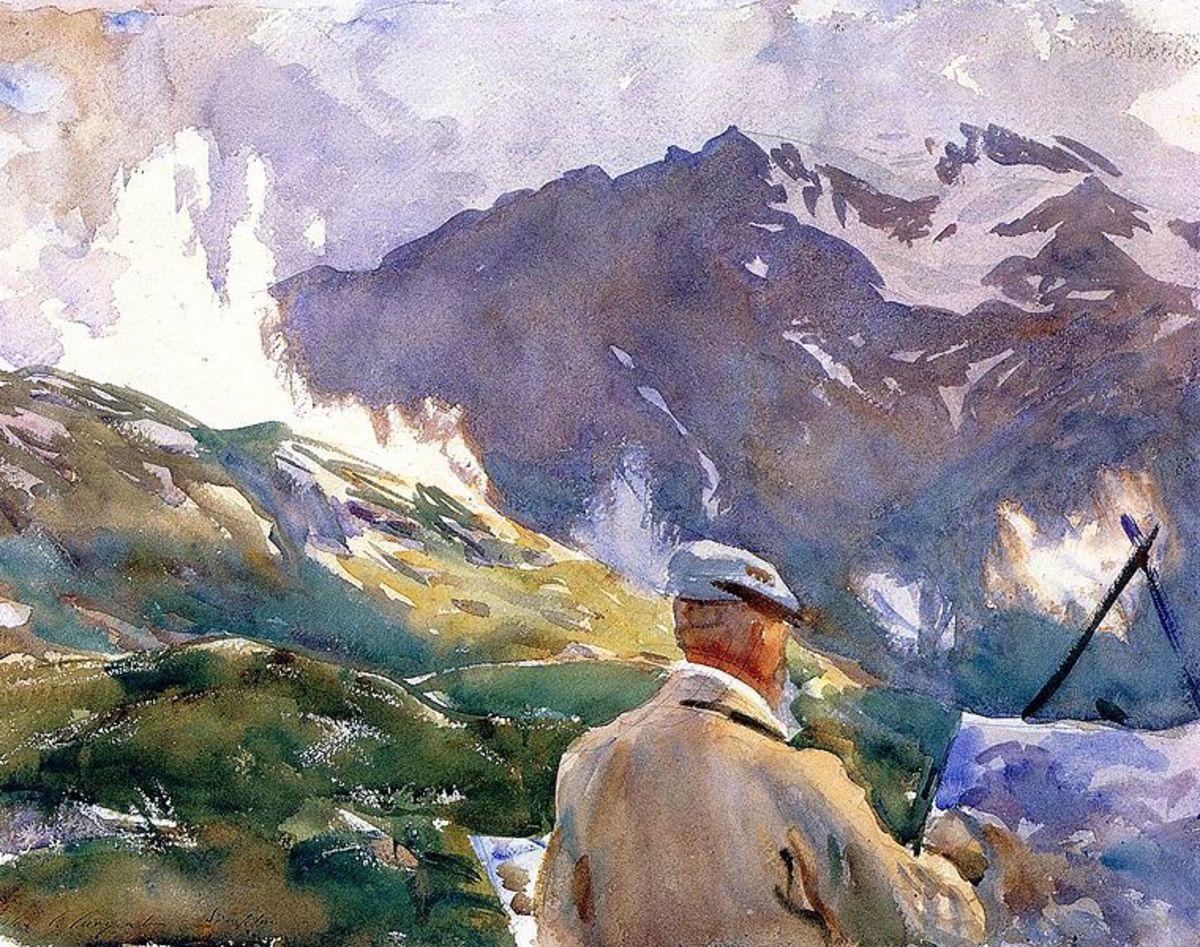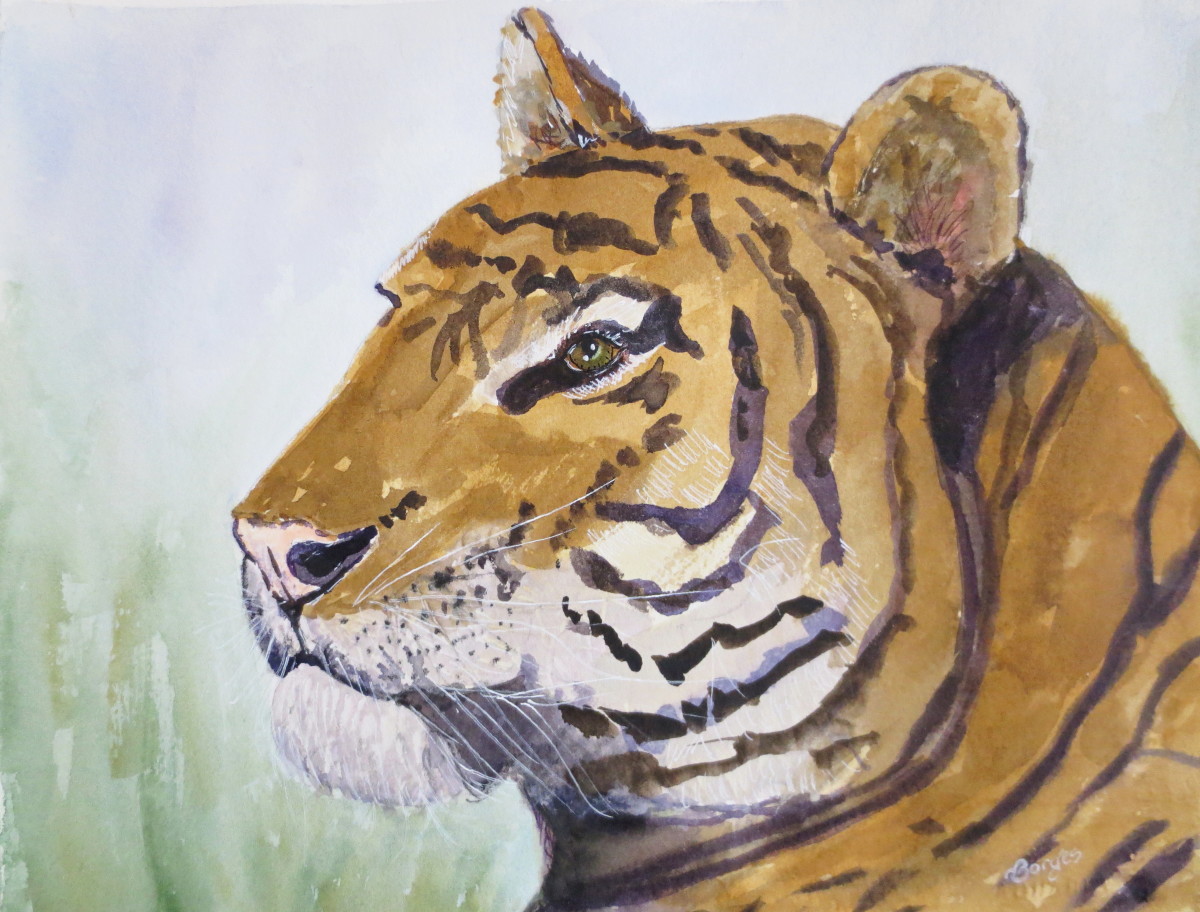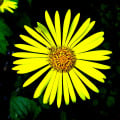My Lazy Way to Asian Painting

Materials Needed -- This Is Important!
To get the effects I'm getting and do them in the ways I adapted to these materials -- you need some of these materials or all of them.
One: you need a good book on sumi-e Japanese ink painting such as The Sumi-E Book by Yolanda Mayhall, which I own, or a Walter Foster book on sumi-e painting. Check the table of contents to make sure it includes "The Four Gentlemen" and explains each of these four classical strokes.
Your local library probably has at least one book on the subject and one of the best ways to use a library book to learn it is to grab a cheap watercolor pad and make your notes with your examples of those strokes while you have the book in your possession. You may want to make copies at the library of the pages with the best examples so that you can put them in that notebook for your permanent reference.
You may want to get at least one ink stick, a suzuri stone grinder and a Chinese brush or several and practice Sumi-E ink painting on its own merits, pure. This will help. These things can be had in inexpensive kits that even include a seal stone and a little red paste for placing your signature as a carved seal, though you have to carve the seal yourself naturally. Most museum shops, many gift shops and art stores carry them and you can order these Sumi-E or Calligraphy Kits online at Blick or Jerry's Artarama or most onilne art supply places.
If you have a better budget than that and want the highest quality sumi-e supplies, then go to <a href="http://www.acornplanet.com">AcornPlanet.com</a> and read the site, then choose one of their professional sets or pick and choose the ink stick, great quality stone and brushes that you want. My daughter bought me an awesome set from them in 2004 that included brushes, ink stone, ink sticks, colored ink sticks and a bamboo brush wrap, all highest quality stuff that is absolutely beautiful. They also have incredible paper at very good prices.
But that's not what this Hub is about. So if you don't get into Sumi-E painting as itself and don't want to try to get hold of a white flannel or felt pad to put under the rice paper so the strokes don't blob (this is essential for painting on rice paper), you can practice the skills for Chinese or Japanese calligraphy and Sumi-E painting by using some shortcuts -- some supplies I've found make me want to practice much more often.
Cheapest version is -- get some Tombow brush pens in black and one or two grays, or a set with some colors as well as grays. These brush pens have tips that function very much like Chinese brushes and are designed to be expressive. They are to kanji and other Asian calligraphy what the ballpoint pen is to cursive writing -- they will do it expressively but you lose something in it because you won't get value changes within the same stroke. You'll get flat black when you use the black pen and flat grays using the gray pens and you can still make it look good and legible or recognizable and get hand practice.
You can also use these to doodle in Asian painting styles on printer paper or the backs of business cards and old envelopes and junk mail, which cuts down on the rice paper bill for practice materials.
This too is optional but a lot of fun and rather cheap. It's one direction to go with it.
What I found indispensible is the Sakura Koi Pocket Box pan sets of watercolor, in 12 or 24 color pan sets. I'm not sure if the 18 color set actually has the waterbrush.
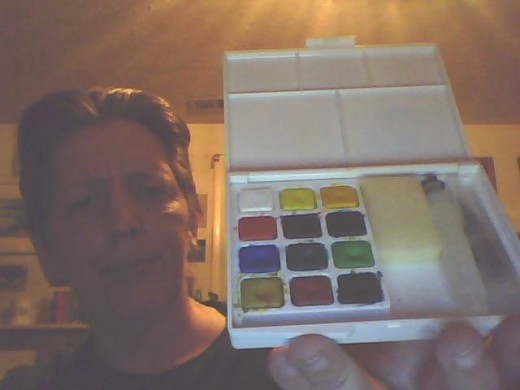
Sakura Koi Pocket Box
The Sakura Koi waterbrush is what's absolutely essential, you can use it with other pan watercolor sets if you already have a nice one and want to save some money. However, the Sakura Koi pan watercolors are very strong and formulated somewhat to an Asian esthetic -- the colors in the 12 color set are very easy to use like Chinese watercolor without mixing in the palette, just dipping into the color you want and maybe tipping in another color and painting intuitively fast.
Watercolor pads are cheaper than watercolor blocks. I prefer blocks because sometimes a painting may have big wet areas that bubble up and cockle, while a block is bound down on all four sides and forces it to dry flat. I bought multiples of small watercolor blocks so if I wanted to do several paintings, I could let some of them dry while I started another and then rotate which one I'm working on. They don't have to be an expensive brand, but they should be actual watercolor paper.
All-media sketchbooks and pads of lightweight "Student" watercolor paper that's only 90lb are okay for Asian painting styles if you don't have broad areas of wash. In fact that's a style what'll let you use the cheaper thinner paper or use a pad to save money. So get some watercolor paper that's sized and bound in some way or get cheap full sheets and cut them and bind them by holepunching them to fit in a ring binder.
The essentials:
Sakura Koi waterbrush -- a nylon brush with a water reservoir in the handle, various brands of these are available but I still prefer Sakura's best with Niji and Derwent coming in a close second, some others lose hairs and give me trouble. It should be a medium or large round unless you get a set of them -- the points on the Sakura waterbrushes are very fine and can give good detail and fine lines if you hold them well, while you can't make a small brush make a big mark.
Pan watercolors, preferably the Sakura Koi pocket box of 12 or 24 because those are well formulated for the technique and chosen to layer well and work well with each other in Asian styles as well as Western, and they are artist grade -- if you create a spectacular piece of finite perfection on good 100% rag paper by serendipity, you're not looking at it fading horribly fast as if you did it in kid watercolors or lower quality student grade color. Artist grade color is also strong and helps a lot for these techniques when you need strong darks.
Watercolor paper sturdy enough to stand up to it and copious enough to let you do lots of it, 90lb or 140lb in Cold Press. With Rough watercolor paper, the texture is so large you have to work very big. With Hot Press, which is smooth, you can't do broken-texture dry brush strokes and lose an entire beautiful technique possible with these, so the Cold Press is the most convenient.
I don't stretch the watercolor paper to remove the sizing, so I'm used to using it as it comes in the block. If you usually stretch your watercolor paper, experiment with it both sized and unsized to see what you like better.
Stretching watercolor paper meansl soaking a whole page, half page or quarter page in the bathtub or a big sink, then taping or stapling it to a wooden (NOT masonite) drawing board the day before you draw and letting it dry tight as a drum and flat. This helps prevent bubbling or cockling but it also means you wind up working large on a big wooden drawing board that's not as portable.
A good watercolor journal could be a pleasant alternative too and lean toward portability and painting from life -- something that Asian painting techniques are wonderful for.
So, some form of watercolor paper to suit your purpose, Cold Press is best. If it's heavier than 140lb you're painting on what feels like a freaking board and it's expensive but absolutely lovely and won't bubble at all. I have some 300lb Arches that's just awesome that way. I usually save that for more water-intensive techniques though since it stands up to them and also has a different, somewhat unfamiliar surface.
Now that you've got all the stuff together, we're ready to start.
Sakura Koi Waterbrush Assembled
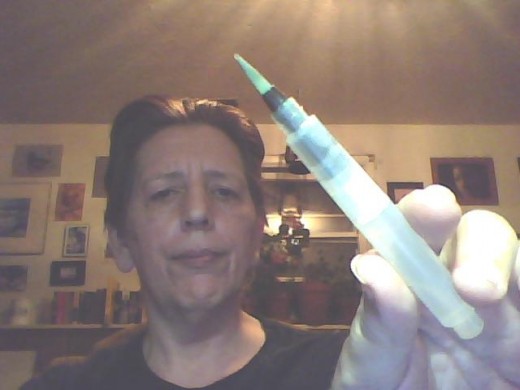
So Now What?
Say, you read this on your break, dropped in at an art store in the lower part of the building and grabbed the Pocket Box, a watercolor journal and lucked into finding one of the books in the same store, so you're sitting there in the break room or a restaurant skimming the book and open all the packages.
Your water brush is disassembled in the section of the case meant for it and has no water in it. So you take it in the bathroom, pull the little black plug out of the reservoir and fill it from the sink. Or you got home and you're doing this at home.
Do not, ever, lose that little black plug for the reservoir.
The brush won't fit in the pocket box unless it's taken apart and if you want to keep it filled for quick use anytime in the break room doing Asian caricatures of your coworkers, the little plug is absolutely essential. The sponge in the set is there for a reason too, don't throw it away, it's not just padding. It is another painting tool.
Don't throw out the cap for the brush either.
That will help keep the brush perfectly shaped and pointy when it bangs around inside the box, and for your best effects in kanji (Japanese high calligraphy) or Asian painting, you need it to be pointed and give you the thin lines in those gorgeous thick-and-thin line strokes.
Put water in the reservoir and fill it up till it's at the threads, if you overfill it right to the top that can create a minor problem easily solved when you put the brush on. You'll get a gush of extra water if you overfill it, not so much it can't be grabbed off by your paper napkin without a fuss. These things are neat and clean.
Screw the brush tip onto the reservoir handle backwards.
If you don't know that it's going to screw on backwards you can spend five or ten minutes at the sink vainly trying to assemble your wonderful new waterbrush and seriously considering how it could be inserted in various parts of my anatomy for not telling you so.
If you forgot and couldn't get it together and went back to your computer prepared to write me a nasty flaming comment for recommending this annoying tool that didn't work, reread this Hub and notice the bold lines and reread them.
I meant it. For real. Screw the brush tip on backwards. That will work.
I have no idea why the best waterbrush created in Japan for doing Japanese calligraphy and quick watercolor sketching in this otherwise perfect, elegant little kit screws together in exactly the opposite way to any other item that screws on or off. But it does. Get used to that. I eventually did.
Within about a year of buying this set, I stopped trying to assemble the brush the wrong way unless I hadn't used it for a while. Ingrained body memory of How Things Work dies hard. Don't try to force it, give it an easy turn in the direction all your life experience tells you should unscrew it, and watch it start connecting as if by magic.
The Sakura Koi Waterbrush Is Left Handed.
You can handle it in either hand, but the screw is left-handed if you think of regular screws as right-handed. I've gotten it down to where I only turn it the wrong way every once in a while and don't keep trying -- the main thing is to not keep trying when doing it wrong doesn't work. Just laugh and assemble it correctly backwards and you're fine, good to go.
That is the hardest part about using this otherwise awesome little pocket paint set. Remember the Brush Assembles Backwards.
Everything after that is as easy as doodling.
Two Birds
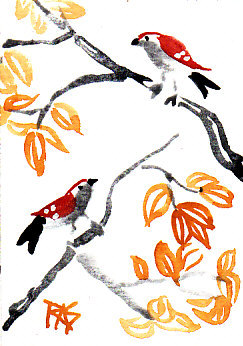
Now it's Time to Paint!
This is where the instructions for your first project are in that good Sumi-E book you picked up at the library or handiest bookstore. I don't have room in this Hub to describe the Four Gentlemen or their history or have a good demo piece set up for each of the classic strokes. The good news is that you can find that information in any book on Sumi-E and it can be applied to watercolor as easily as to ink stick painting.
If you hold the brush the way the masters tell you, far to the back and straight up and down to the paper, it's going to feel like you have no control and drive you nuts if you're used to painting with it held like a pencil. So try both, do some fooling around and some test strokes, either try to copy examples or make up something by doing a practice stroke and add other strokes to turn it into whatever it looks like by detailing. That suggestion is from Yolanda Mayhall's book -- she pointed out it's more fun and better practice to do whole paintings than just pages of repeated strokes, so try to get the stroke right and then add more elements till it looks like sometihng recognizable.
That trying to make it a whole painting starting with the practice stroke and using its repetitions for other bamboo stems or orchid petals or birds and so on, also gives an eye for composition and a very creative knack for making up cool Asian pictures out of your head, painting from memory and inspiration. I lightened up and stopped being so literal as when I do Western realism, but still managed by quite a bit of practice to get very recognizable subjects.
"Two Birds" is my best Asian style painting to date.
I did it entirely with the Sakura Koi waterbrush and used my 24 color set only because I had it handy and wanted the bluish Payne's Grey instead of flat black for the black.
Some things to remember in Asian painting.
Use the pans directly without mixing. The red color is the earth red from the bottom row on the little set, the golden color is the yellow ochre right next to it, and I opened the other set to get the Payne's Grey for black. Colors mix on the paper when a wet area touches another wet area but it's much more traditional to just use each color separately.
This is where a pan set gets very convenient and Asian painting sidesteps an entire process that most Western watercolorists spend a lot of time and thought in -- mixing colors. By using the colors you have in greater or lesser concentration you can imply color shifts by how strong the colors are. By going over other colors when wet, they mix where they overlap. By going over them after they dry, they mix optically and have a more vivid effect.
And you don't have to bother cleaning off the palette when you're done, doing that.
You can swipe the waterbrush on a paper napkin or back of an envelope or your jeans or whatever till it runs clear while changing colors, or drag a little of the previous color into the next temporarily. Either way, paint with what's at hand.
One thing is very different in technique from using an ink stick and Chinese brushes.
With the ink stick, you'd grind a thin wash for the palest value of ink and put that in a little bowl, then put water in and grind it some more to make the next value, spending a good half hour to an hour meditating while you grind and prepare the inks to have three to five shades of gray including very darkest opaque of the color you're using. This is why those porcelain flower palettes are handy for ink stick grinding and why the sticks are a little better to use than the bottled Sumi-E Ink because that comes in the darkest concentration so you have to add successively more water to each pan to get it to have those different values.
When you use the waterbrush into the pans, the very first stroke will have the strongest dark if you swished it in the pan enough -- and each stroke or section of stroke thereafter will lighten.
So as I played with the Sakura kit, I got used to looking at how much color was on my brush, recharging it when I needed strong color -- and keeping scrap paper or a napkin handy if I needed dilute color. Just swipe it a couple of times on scrap till it looks right to get the dilute values. It's a slightly different process from "reach for the light gray well" but it has the same effect.
One thing this has led me to do as a shortcut is to dip the brush in the black, get it good and strong, start using it in one area of a painting and then as it lightens, move to areas I know I need lighter values of gray paint. So I work on several areas at the same time -- the bird maybe has a black beak and a black tail and a dark gray back and a pale belly -- do the tail, then the back, then recharge and do beak and legs, then do the pale belly after swiping it on something.
Because Chinese traditional painting often uses touches of white or opaque colors mixed with white and my colored ink stick set has a white stick, I am working to a different tradition and don't hesitate to mix a strong clean white with the brush and used it in Two Birds to dot in the white spots on the wings. Your white does not need to be reserved.
You may want to experiment with white mixtures for some subjects or if you're working in color on a colored background. White will lighten colors and make them opaque.
Point the waterbrush with your fingers after cleaning it, every time. Keeping that point naturally sharp and well shaped helps me get small details without needing to resort to using a smaller brush. The original dmensions of "Two Birds" are 2 1/2" x 3 1/2" -- the size of a baseball trading card -- the birds are less than an inch long.
Work large or small to your own comfort zone. I just like working small so that I don't have to move around too much. I'm working around disabilities and always liked doing miniatures.
One great project you can use Sakura Koi pan watercolors and waterbrush with Sumi-E strokes and techniques for is a spectacular way to send holiday cards that are themselves real gifts. Once you get some practice with it and your paintings start coming out well, at the point that at least with a few favorite subjects they usually come out well -- pick up a pack of watercolor greeting cards with envelopes.
You can sit down with that set and those techniques and paint fast, creating an original watercolor as a gift for each of the people on your list that's also a nice card you can write in. This is very special to most recipients, that you took the time to compose a painting while thinking of them is almost the ultimate in personal gifts of time and attention. If they're more impressed by how much you spent on it, then get the very best quality watercolor greeting cards and pick up a 24kt gold and a silver tab from ASW or any art supply place that has gold leafing supplies.
The "real gold tab" is just that, real gold ground to pigment size particles and mixed with gum arabic to make watercolor. It's pricy, you get a little tiny dot for about $30 to $50 because it is actual gold, but it goes a long long way. Adding gold accents to the cards with that can appeal to even the snobbiest recipients because you have purchased the best quality materials for this work and also given them your time. You also won't use it up on just one card, the little tab lasts a surprisingly long time.
It also takes no more practice to use it than it does to use watercolor from a pan, so you can even use it with the waterbrush. Real gold leafing on the other hand is a difficult skill involving several different gooey gluelike mediums that have to be exactly wet enough/dry enough and applied just right and burnished on at the right moment or you use up $30 worth of gold on a one inch square area wasting most of it, give up and then cover the fiasco with a couple of "shell gold" layers using the Real Gold Dot just so that it looks decent.
I'm not trying the gold leafing again till I get it right with the fake leaf, but that's another story. "Shell gold" or "Real Gold Dot" or "Real Gold Watercolor" is an excellent bargain for sumptuous accents that have the special resonance of being genuine -- you don't use much per painting but you know it's cool for being real.
Have fun. In all my years of trying to do quick watercolor sketching, that set became the most convenient because I rarely have to even mix the colors or clean the palette, don't need to clean water cups or clean up afterward, and the Asian techniques go very fast once I got used to the basic strokes and odd way to hold the brush. I also still hold it wrong sometimes to get some strokes because it works and when I'm using this kit, I am so not being a purist.
What it will do is make the practice quick and easy and separate some types of practice, like the strokes, from the other types of practice like Ink Grinding Meditation. If you like sumi-e for itself, then do both -- and do practice runs of paintings you plan in ink with this set so that you have some idea how you want them to come out.
It comes out so beautiful in its own right that I'm happy with it as its own medium and style of watercolor painting.
The technique and practice can also improve your Western watercolor painting that isn't Asian style. I'll add one more image and talk about today's painting a llttle.
Influence on a Non-Asian Style Painting
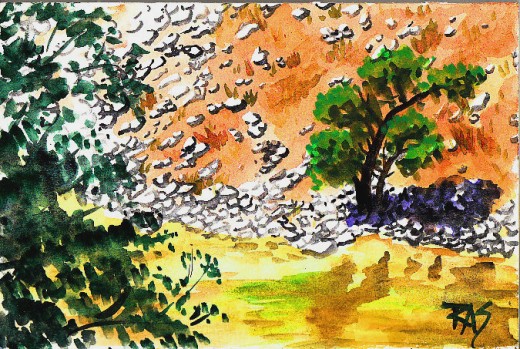
Influence of Asian Practice on Western Paintings
Even if you're not interested in learning sumi-e for its own sake, studying and practicing the Asian traditional strokes and techniques can improve your other watercolor styles.
I painted Keene Ranch from a photo reference posted in a challenge on <a href="http://www.wetcanvas.com">WetCanvas.com</a> by WC member "J." My intent was just to crop and render the California landscape well -- not to do it as if I were trying to convey the most information in the fewest strokes. I didn't use large areas of negative space at all, instead I used large washes of color and then worked into them sometimes wet in wet, more often wet on dry and let earlier layers dry.
Because I've done so many Asian style watercolors with the Sakura Koi set, my strokes loosened up and I didn't work as hard to try to hide them. I started working in a more painterly way. IN shading the rocks, each little rock was its own tiny sumi-e rock in Paynes Grey -- I described a rock with a single stroke creating its shadow and massed them repeating all over the area. I wound up implying more light to the left behind the big dark tree by letting the brush run out of color and working on left-side rocks whenever it faded.
Many areas, I added color without mixing either into wet or into dry.
In that big dark tree, I used calligraphic strokes for branches and foliage -- and although the overall result is a Western paniting and pretty accurate to the reference, I also wound up creating beautiful passages I love in it because I had that practice of trying to say a lot in as few strokes as possible.
When a new style blends into everything a painter learned before, it only deepens and enriches what you usually do. This one's livelier than many of my previous watercolor landscapes and whether you think it's brilliant or can look at it and see how far I have to go before I become a master -- I know in looking at it how much of a dramatic leap it is from some previous stiff, flat, unbelievable watercolor scenes.
Enjoy. The Sakura Pocket Box most of all encourages you to play with Asian techniques and paint spontaneously on impulse -- it is the most convenient set I've ever used for that kind of fast impulsive paniting. So if you start using it often, your paintings will improve by frequent study and practice till you feel like I did about these two, and can't believe you did something that cool too!
